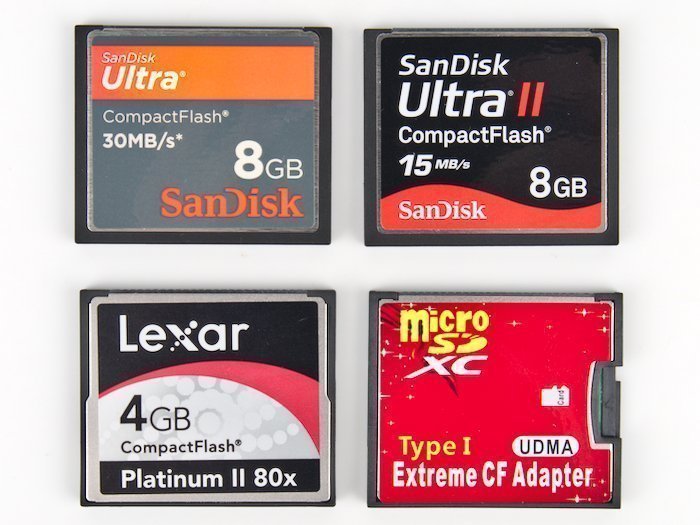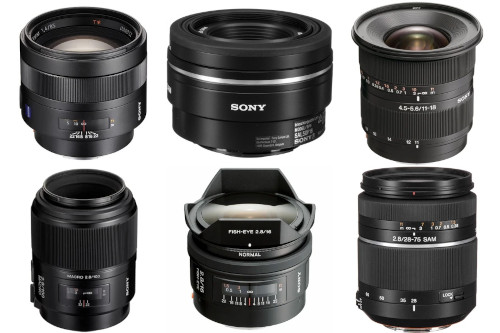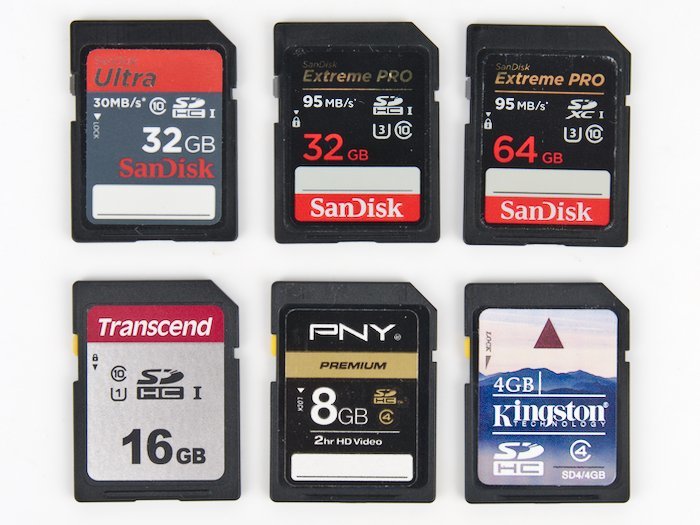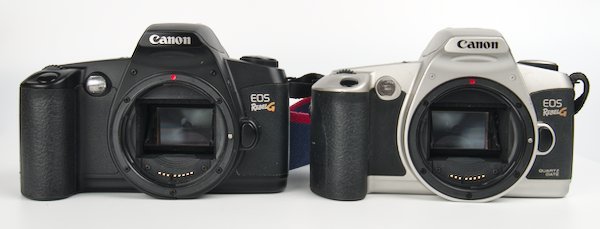
Canon EOS Rebel G Review - A Plastic & Fantastic 35mm Film Camera from Canon
- Nathaniel Stephan
- Canon eos rebel g , 35mm film
- June 25, 2019
Table of Contents
You’ll likely spend more money on a few rolls of 35mm film, than a Canon Rebel G. The camera is practically free.
Introduced in 1996, the Canon EOS Rebel G is a 35mm film single-lens reflex (SLR) camera that replaced the Canon EOS Rebel XS. It is a consumer-level 35mm SLR camera.
In Europe, it was called the Canon EOS 500N and in Japan, the New EOS KISS.
There are 2 body color variations, black and silver. There are also versions that have a quartz date back.
In 1999 the Rebel G was replaced by the Canon EOS Rebel 2000.
Price & Where to Buy
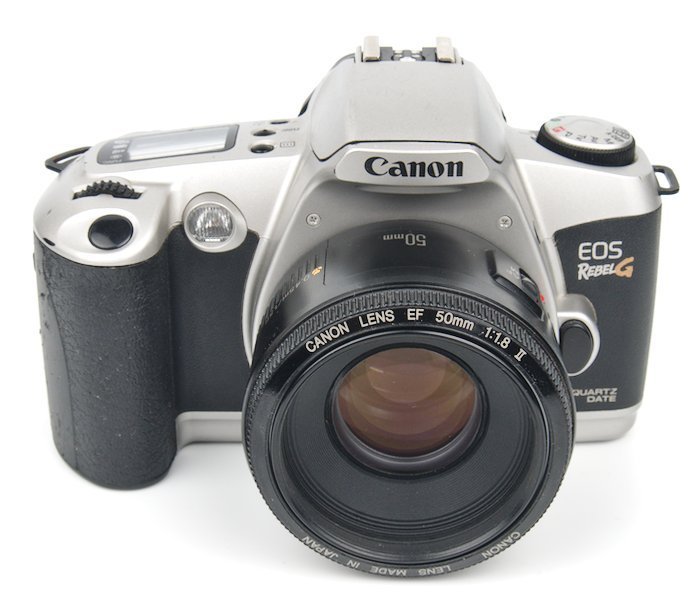
Canon Rebel G’s can easily be found all over the place. Thrift stores, garage sales, Craigslist, Facebook groups, and online.
If you’re looking to buy a Rebel G online, you’re best off checking as many places as possible. A small change in the supply of used cameras can make them more expensive.
Affiliate Advertising Disclosure
Outside the Shot is a participant in the Amazon Services LLC Associates Program, an affiliate advertising program designed to provide a means for sites to earn advertising fees by advertising and linking to Amazon.com.
As an eBay Partner, I may be compensated if you make a purchase. I also participate in affiliate advertising programs with KEH and Adorama. More can be found on the Affiliate Disclosure page.
See current price and more information on:
Camera Battery - 2x CR123A
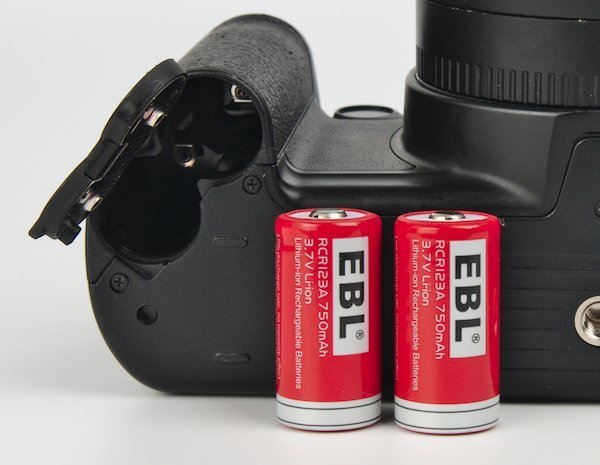
The camera is powered by two <CR123A batteries . These batteries can generally be found in stores, but they can be expensive.
Keep in mind that using the built-in flash will drain the batteries faster.
Unlike mechanical film cameras, such as the Canon FT QL, the Rebel G will not work without batteries.
Buying film camera batteries online is one way to save some money because you’ll want to buy at least 4 batteries. That’s because dead batteries will put an unfortunate end to your photography.
It is a good practice to always have a spare set of batteries with the camera. This is especially true in cold weather as battery life will be reduced.
Quartz Date Back - CR2025 Battery
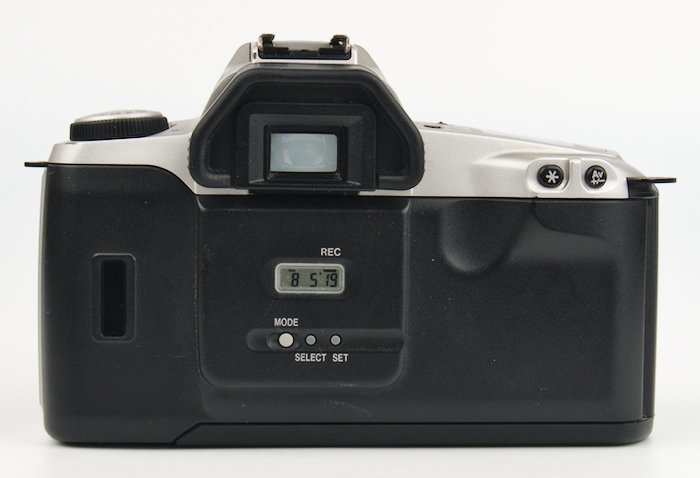
The quartz date back provides the option to have a time and date added to the photos. It is not capable of displaying current dates.
The quartz date back needs a CR2025 battery. These are coin cell watch batteries, which are widely available. They are a common choice for Canon’s quartz date backs.
You can find the batteries online or in many big box stores.
Camera Manual (All Features Explained)
Unless you’re an expert in 1990’s 35mm cameras, you’re going to want to have the manual available for reference.
A PDF scan of the Canon EOS Rebel G manual can be found on Butkus.org. The manual is helpful for understanding basic usage and the advanced features of the Rebel G.
The manual may help you with one or more of the following: exposure compensation, exposure modes, SLR camera basics, and using the built-in flash.
Shutter Speeds
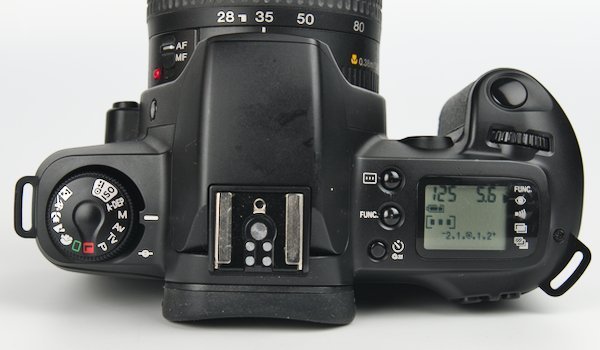
Shutter speeds range from 30 seconds to 1/2000 of a second in half steps. The maximum flash sync speed is 1/90 of a second with the build-in flash on an external one.
Overall the shutter speed range should be fine for casual to intermediate use.
There is also a bulb mode for longer exposures. Keep in mind that using the bulb mode will drain the camera batteries, as power is needed to keep the mirror up and shutter open.
Depending on how long your exposure is going to be, it is smart to use new batteries. You don’t want to waste your time and film on a failed shot because of weak batteries.
The Rebel G also has an electronically controlled 10-second self-timer.
When the timer is activated the camera will slowly beep. Towards the end of the countdown, the Rebel G will beep at a faster rate.
Continuous Frame Rate
For continuous shooting, the camera is capable of a maximum of 1 fps. That’s not very fast for an SLR, but keep in mind that the Rebel G was a consumer-level camera when it was released.
If you do not plan to photograph any fast-moving subjects, the slow continuous shooting speed will not be an issue.
If you want a camera capable of a faster frame rate, look for a Canon Elan 7.
Shooting Modes
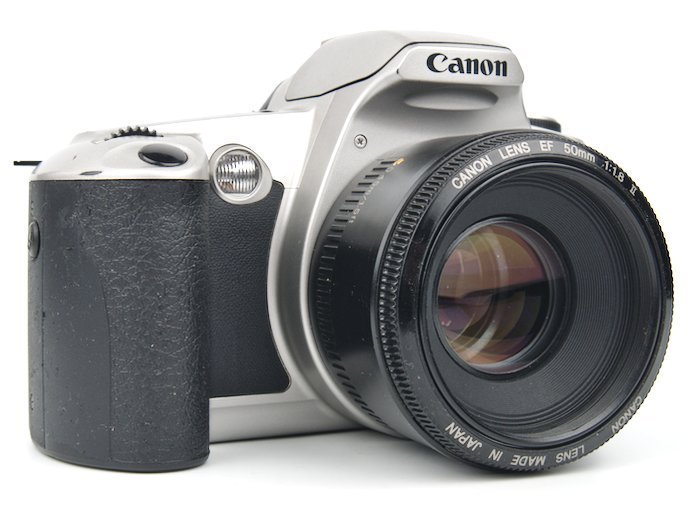
All of the exposure modes you would expect from an SLR camera with an electronically controlled shutter are included. The Canon Rebel G has:
- Auto Exposure (AE)
- Aperture Priority (A)
- Shutter Priority (S)
- Program Mode (P)
- Manual Mode (M)
Program shooting modes are also included. These modes use settings that will give a better result than auto for specific types of scenes. They are:
- Portrait
- Landscape
- Close-Up
- Action
- Night
What Film Does the Camera Use? (35mm)
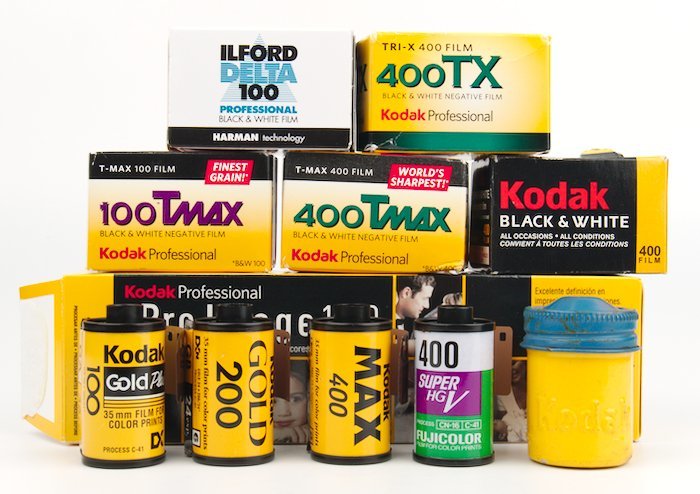
The Canon Rebel G uses rolls of 35mm film. Rolls of film are sold in light-tight metal cassettes, which allows the film to be loaded in daylight.
A variety of black & white and color film is available. You might be able to find rolls for sale at Walgreens, CVS, Walmart, and other stores.
Those same stores will also be able to develop the film for you. However, almost all stores no longer do the development in store.
They mail the film off to a lab to be developed and you will not get your developed negatives back.
You don’t need to use a store to develop your 35mm film. Instead, you can just mail the film off yourself to a photo lab, such as The Darkroom.
What 35mm Film to Use?
This has already been covered by this page: Best Canon EOS Rebel G Film.
400 ISO film is a great choice to use with the Canon Rebel G. It is fast enough to use indoor and shade, but not too fast that direct sunlight makes getting a proper exposure impossible.
A film with a lower ISO, like 100, requires more light to expose properly. This means using a larger aperture or longer shutter speed if you’re not in sunlight.
The 35-80mm kit lens that comes with the Rebel G does not have a very large maximum aperture. This will make the lens difficult to shoot within low light without a flash.
Having the built-in flash gives you the convenience of always having one with you. An external flash may get in the way or be inconvenient to carry.
If you don’t want to use the built-in flash, use a tripod. The added stability will allow you to get sharp photographs using longer shutter speeds.
Unless you are going to be in full sun or use a flash, I would advise against using ISO 100 film. If you will have lots of light or are comfortable with using a flash ISO 100 film will produce images with less grain than ISO 400 film.
Do Not Use Infrared Film
Infrared film cannot be used with the Rebel G. An IR sensor inside the camera monitors the film advance. The sensor will fog any 35mm IR film loaded into the camera.
Film ISO Settings
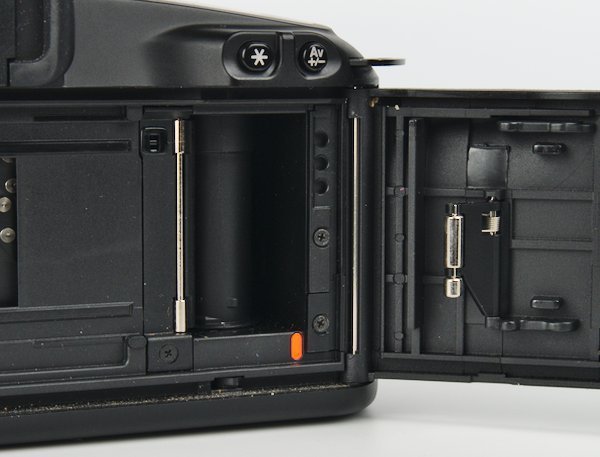
The camera has an ISO range 25-5000 for DX-coded film. The automatic ISO setting from the DX-coded film can be overwritten through the same process needed to set the ISO for non-DX-coded film.
For non-DX coded film, the ISO can be manually set from 6-6400. This is done by setting the control dial to the ISO setting and rotating the command dial. Refer to the manual if you need more help.
Viewfinder & Metering
The SLR viewfinder in the Canon EOS Rebel G is a pentamirror instead of a higher quality pentaprism. However, a pentamirror weighs less.
For a camera used for personal enjoyment and casual shooting, you may prefer to have a lightweight camera.
Metering is center-weighted. There is no depth-of-field preview function. This is standard for anything released in the previous 2 decades. There are no problems with the camera’s ability to selects the correct exposure.
Autofocus
There is a 3 point autofocus system on the Canon EOS Rebel G. Autofocus points can be individually selected or used for high-speed tracking. Changing AF points is done by pressing the autofocus button and then selecting the point you want to use with the main dial.
While the lack of focus points is a departure from the digital options being released in 2020, just focus with a point and then recompose the frame.
Overall, the performance of the autofocus is better than earlier models in the EOS Rebel line. The improvements in the Rebel G were immediately noticeable when compared to the first Rebel camera, the Canon EOS Rebel.
Canon EF Lens Mount
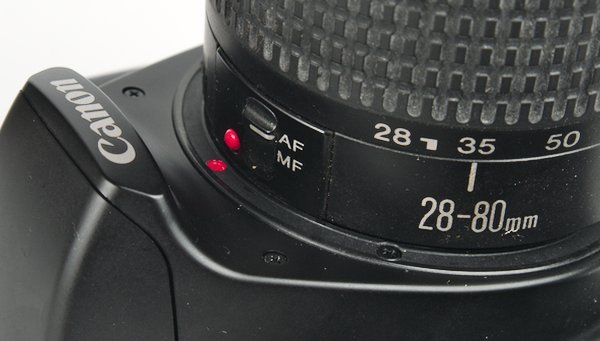
Any Canon EF lens can be used on the camera. These are full-frame lenses that can also be used on Canon DSLRs.
The one unfortunate thing about the lens mount is that it is plastic. I am never a fan of this because I worry about the mount getting damaged or worn down.
A slight change from the lens mount being square to the film plane can cause the focal plane to be tilted. Considering the price, the plastic mount is not an issue to worry about.
Compatible Canon EOS lenses will have a red dot indicating the correct position for mounting the lens to the camera.
With any Canon EOS camera, the red dot will be at the top center of the lens mount.
Canon EF-S Lenses
EF-S lenses designed for Canon DX digital cameras will not work. The mount looks similar to an EF lens mount.
You can tell the difference because Canon EF-S lenses have a white square to indicate where to mount the lens.
Canon camera bodies that can use EF-S lenses will have a white square on the face of their camera mount. The white square will be to the right of the red dot, when looking at the front of the camera.
Recommended Lenses to Use
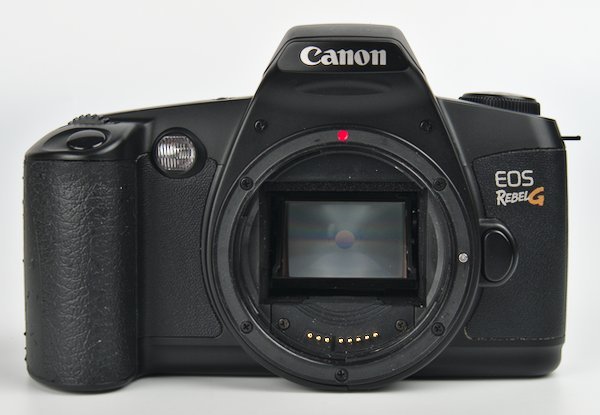
All of the lenses on this list cost less than $100 used. The 50mm and 28mm primes will have an advantage in picture quality over the zooms below.
The Canon zooms will have some image quality issues, but at least they are cheap. A zoom lens that is better is expensive enough to warrant replacing the EOS Rebel G.
- Canon EF 50mm f/1.8 (Amazon)
- Canon EF 28mm f/2.8 (Amazon)
- Canon EF 35-80mm f/4-5.6 (Amazon)
- Canon EF 80-200mm f/4.5-5.6 (Amazon)
- Canon EF 100-200mm f/4.5 (eBay)
Camera Accessories
There are many accessories available for all Canon EOS analog and digital SLRs.
These are just a couple of film camera accessories pulled from the Canon EOS Rebel G manual, that you can actually find.
380EX Speedlite
The flash represents the top of the line offering Canon had to offer when the camera was initially released. It is powered by 4 AA batteries.
The Canon 380EX Speedlite uses TTL/E-TTL protocol for auto flash exposure control. The flash head has 4 different bounce angles and 6 zoom settings.
Using a sync cable will allow you to move the flash off the camera, unlocking the biggest advantage over the built-in flash.
220EX Speedlite
The flash head is fixed in place so you cannot select any bounce angles. It uses 4 AA batteries.
The Canon 220EX Speedlite supports the following Canon TTL protocols: TTL, E-TTL, and E-TTL II.
Multiple Exposures & Bracketing
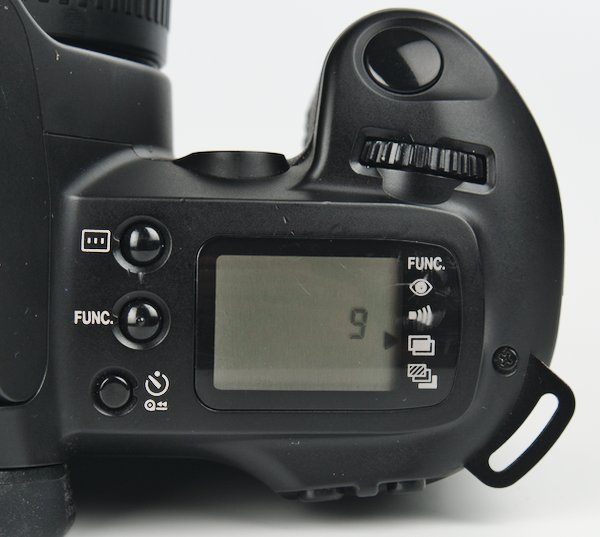
Multiple exposures can be taken by pressing the function button until the arrow points to the multiple exposure icon on the LCD.
After that, the main dial can be turned to select the number of exposures to take for that frame.
A maximum of 9 multiple exposures can be taken with the Rebel G. You can also use the built-in flash during those.
After the sequence of shots has been completed the camera will go back into shooting single frames.
Below the multiple exposure option is the bracketing option. You have the ability to select taking 3, 5, 7, or 9 images from -2 EV to +2 EV using the control dial.
Alternative Cameras
Here are some alternative SLR film cameras from Canon and Nikon. A more expensive film camera will have a broader set of features.
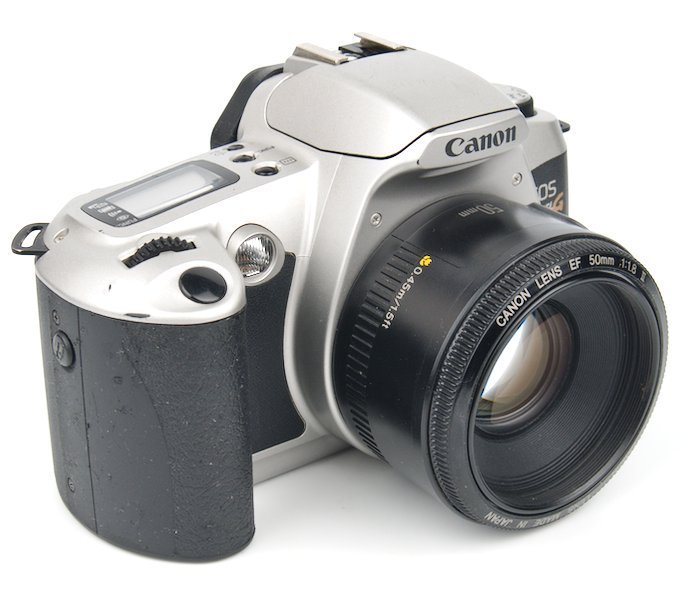
Canon Rebel G vs 2000
This is a good comparison because the Rebel 2000 was the model released to replace the Rebel G. In theory, it should be better, but in reality, little was changed.
The biggest problem with both cameras is that they have plastic EF mounts. They are weaker and more prone to damage than metal mounts.
I would treat the G and 2000 as the same model and not give favor to either one if I was looking to buy one. Instead, I would try to find the best deal.
An upgrade in build quality came with the Rebel 2000’s replacement, the Rebel Ti. The quality improvement also continued on to the Rebel T2.
Canon Rebel T2 (Europe - EOS 300X, Japan - Kiss 7)
For $10-$15 more, you can get the last entry-level 35mm film SLR produced by Canon. I think that this is the best choice for an entry-level Canon EOS 35mm film camera.
Released in 2004, the Canon EOS Rebel T2 has 7 auto focus points, a higher frame rate, better focusing speed, and higher quality build.
The Rebel T2 is also newer, so the reliability should be better.
Canon Elan 7 (Europe - EOS 30, Japan - EOS 7)
Released in October of 2000, the Canon EOS Elan 7 is a big step up in build quality and features. It was marketed towards enthusiasts and advanced amateurs.
This includes having a faster maximum shutter speed as well as more autofocus points.
The EOS Elan 7 can be hard to find. When the camera does show up for sale on eBay they sell in the $100-$150 range with a kit lens.
Avoid the Elan 7e or EOS 33 as they have eye movement controlled autofocus detection. You’re supposed to look into the view finder at the focus point you want instead of needing to manually select the focus point.
The eye-controlled focus point detection did not work well. It was never included on any of Canon’s other cameras.
Nikon N65
The N65 was a competitor to the Canon EOS Rebel 2000. Notable differences are the better build quality, faster frame rate, and the Nikon F mount.
A big negative for the N65 is that the viewfinder is small. This makes the camera less enjoyable to use.
The N65 is a good choice if you already own F-mount lenses. Check out my Nikon N65 Camera Review if you’re interested.
Short Review of the EOS Rebel G
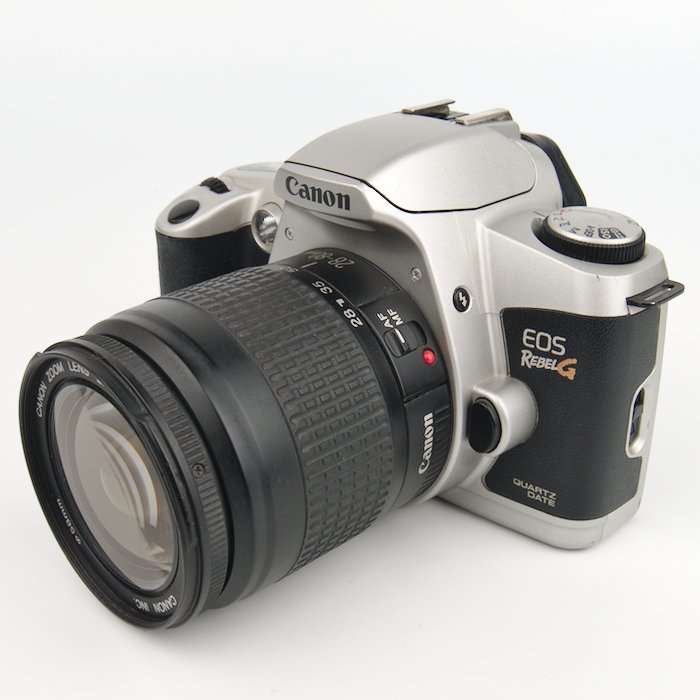
Overall, I would give the Canon EOS Rebel G 4 stars out of 5.
The biggest factor in my review of the camera, is the price. Obviously the features do not compare well against top tier Canon film cameras, but you’re likely not looking for one of those.
If you’re not looking to spend very much, the Canon EOS Rebel G is a great starter camera to try analog photography with.
This is especially true if you already own Canon EF lenses.
Even if you don’t own any EF lenses, the Canon EOS system is great to get into.
Having a Canon EF lens mount means there are millions of used lenses out there. You’ll always be able to find several lens options at different price points for any focal length you could want.
The plastic build quality is not optimal, but at least that means the Rebel G is light. Plus, used prices are low enough for the build quality to not be a big deal.
Another positive thing is the Canon EF upgrade path to higher-end SLRs and DSLR cameras.
The cross-compatibility between film and digital with Canon EOS is only rivaled by Nikon’s F-mount.
